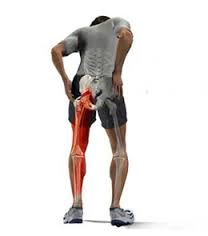A very common problem
Understanding Sciatica is important. It is certainly something to watch out for. It is a widespread condition. However, it’s difficult to know exactly how common it is. This is because it is often an underlying cause of a more generalized problem.
So, for example, you might have regular lower back problems. Or you might experience shooting pains down the back of your legs. Or even experience buttock pain. In many, but not all, of these instances, sciatica could be to blame. It’s not always easy to know.
But, according to NICE, between 13-40% of us will suffer an episode of sciatica. If not often, at least at some point in our lifetime. So what is it all about? And how can it be treated?
Understanding Sciatica – what is it?
Sciatica is a catchall term that refers to a set of symptoms. These may include pain, tingling, numbness, and/or weakness. These sensations radiate along the path of the sciatic nerve.
The path runs from your lower back through your hips and buttocks. And then continues down the back of your leg. Sciatica typically affects only one side of the body. But in some rare instances, it can affect both sides.
The term is used as a description of certain symptoms. It is not a diagnosis as such. That’s because it is often due to a combination of several possible causes.
For example, a herniated disk in your spine. Or possibly an overgrowth of bone in your vertebrae are common causes. Other causes include compression by a tumor or damage to the nerve. These, in turn, are sometimes a result of diseases such as diabetes.
Small tips for avoiding sciatica
One of the key steps is to practice good posture. If you are sitting or standing, find out some of the key steps to proper posture. And even work on posture as you sleep. If you work in an office, try and get a DSE assessment done. Get advice from professionals if you can.
Also, try and work on the strength of your back and abdomen. This will help support your spine. Disciplines such as Pilates and Yoga are excellent for this.
If you do work in an office. Try and get up at regular intervals. Sitting for long periods of time will not help your cause.
Dealing with Sciatica
A program of exercises and stretches can help reduce sciatic nerve compression. In addition, Osteopathic manipulative treatment can be used to help relieve pain. It also helps increase your range of motion.
Acupuncture and massage therapy have been shown to provide benefits. These include increased blood circulation, muscle relaxation, and release of endorphins. (Endorphins are the body’s natural pain relievers).
Pain killers, anti-inflammatory medications, muscle relaxants, or injections with a corticosteroid or anesthetic may also prove useful.
At Perea Clinic we offer massage and other forms of therapies that are effective in managing sciatica. If you want a better understanding of sciatica please contact us.
We hope this information is useful. If you need advice or have any questions about our treatments, please contact us. You can find us in Mill Hill Broadway and Islington. We are always glad to help!
If you like this blog, please share!




